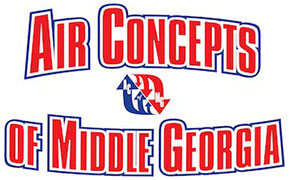
You might not think often about how your air conditioner works, but it needs refrigerant to keep your residence fresh. This refrigerant is bound by environmental regulation, since it contains chemicals.
Subject to when your air conditioner was installed, it may require R-22, R-410A or R-32 refrigerant. We’ll discuss the differences and which air conditioner refrigerants are being phased out in Milledgeville and Middle Georgia, in addition to how these phaseouts impact you.
What’s R-22 and Why Is It No Longer Being Made?
If your air conditioner was installed before 2010, it likely has Freon®. You can discover if your air conditioner contains it by calling us at 478-200-5689. You can also look at the name plate on your air conditioner condenser, which is located outside your residence. This sticker will contain info on what type of refrigerant your AC uses.
Freon, which is also known as R-22, contains chlorine. Scientists consider this chemical to be bad for the earth’s ozone layer and one that results in global warming. The Environmental Protection Agency, which controls refrigerants in the United States, banned its manufacture and import in January 2020.
Should I Replace My R-22 Air Conditioner?
It differs. If your air conditioning is running fine, you can continue to use it. With regular air conditioner maintenance, you can expect your system to operate around 15–20 years. However, the Department of Energy notes that replacing a 10-year-old air conditioner could save you 20–40% on summertime cooling costs!
If you don’t install a new air conditioner, it can cause an issue if you need air conditioning repair later on, specifically for refrigerant. Repairs may be higher-priced, because only reduced levels of recycled and reclaimed R-22 is available.
With the end of R-22, many new air conditioners now use Puron®. Also called R-410A, this refrigerant was developed to keep the ozone layer strong. Since it needs an incompatible pressure level, it isn’t compatible with air conditioners that use R-22 for cooling.
However, Puron still has the potential to contribute to global warming. Because of that, it could also sometime be ended. Although it hasn’t been disclosed yet for residential air conditioners, it’s anticipated sometime this decade.
What Refrigerant Will Take the Place of R-410A?
In preparation of the discontinuation, some manufacturers have initiated using R-32 in new air conditioners. This refrigerant rates low for global warming likelihood—about one-third less than R-410A. And it also lowers energy expenditure by approximately 10%, according to the Intergovernmental Panel on Climate Change’s Fourth Assessment Report. That’s savings that could be sent on to you through your utility costs.
Air Concepts of Middle Georgia Can Assist with All Your Air Conditioning Needs
In summary, the modifications to air conditioner refrigerant probably won’t affect you very much until you require repairs. But as we talked about beforehand, repairs connected to refrigerant may be pricier because of the reduced quantities that are accessible.
Not to mention, your air conditioner frequently breaks down at the worst time, typically on the muggiest day when we’re experiencing many other calls for AC repair.
If your air conditioner relies on an outdated refrigerant or is aging, we recommend getting a new, energy-efficient air conditioner. This provides a stress-free summer and could even decrease your utility expenses, especially if you get an ENERGY STAR®-rated model. Plus, Air Concepts of Middle Georgia offers many financing programs to make your new air conditioner even more affordable. Contact us at 478-200-5689 to begin now with a free estimate.
